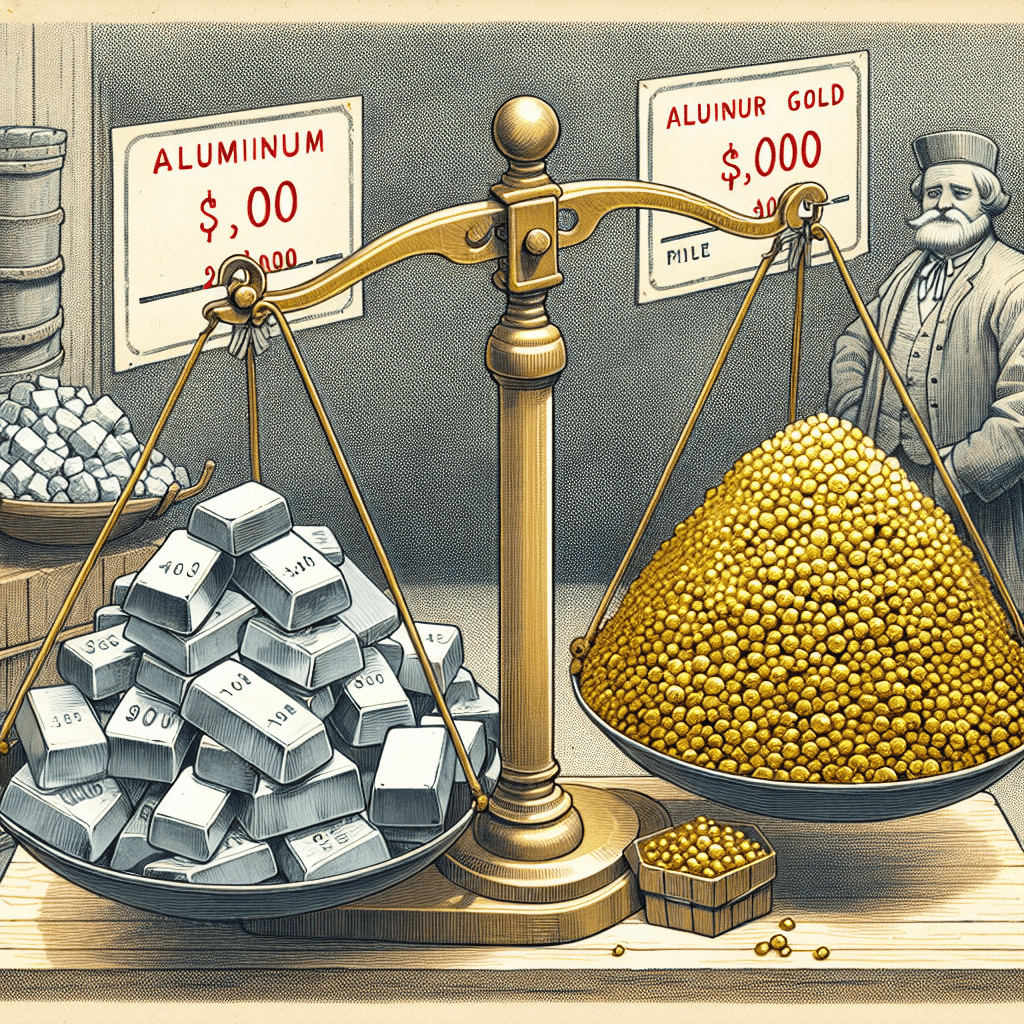Worth More Than Gold: The Metal We Now Throw Away
It’s in the junk drawer of every home and the landfill of every city—a common metal we discard without a thought, yet it's now more critical to our future than gold.


Too Long; Didn't Read
TLDR: Once more valuable than gold, aluminum became so cheap to produce through modern processes that we now casually throw it away in everyday items like soda cans and foil.
From Treasure to Throwaway: Was Aluminum Once Actually Considered More Valuable Than Gold?
Imagine tossing a gold bar into the recycling bin – unthinkable, right? Yet, the ubiquitous, lightweight metal we use for everything from soda cans to airplane parts once held a status rivaling that of precious metals. It might seem unbelievable today, but there was indeed a time when aluminum's rarity and difficulty of production made it incredibly valuable. This post delves into the fascinating history of aluminum, exploring the period when this now-common metal was prized, why its value plummeted, and how technology transformed its status forever.
A Glimmer of a New Metal
Aluminum is the most abundant metallic element in the Earth's crust, making up about 8%. However, unlike gold or silver which can sometimes be found in their pure forms, aluminum is always tightly bound with other elements in rocks and minerals like bauxite. Isolating it proved immensely challenging for early chemists.
- Early Attempts: Danish physicist Hans Christian Ørsted is credited with first isolating impure aluminum in 1825. German chemist Friedrich Wöhler improved the process slightly in 1827 and produced small globules of the pure metal in 1845.
- The Difficulty: These early chemical reduction methods were complex, inefficient, and yielded only minuscule amounts of aluminum. Producing even a small quantity required significant effort and expense.
This difficulty in extraction meant that for several decades after its discovery, pure aluminum remained a laboratory curiosity and a rare novelty.
The Age of Aluminum Luxury
The mid-19th century saw aluminum elevated to a status symbol, largely due to its scarcity and the novelty of its silvery sheen and light weight.
Imperial Prestige
Perhaps the most famous anecdote involves Emperor Napoleon III of France. Fascinated by the potential military applications of the lightweight metal (imagining lightweight armor and helmets), he funded research into its production. The costs remained high, however, and aluminum became a symbol of wealth and status at his court.
- Dining in Style: Legend holds that Napoleon III reserved his prized, newly fashioned aluminum cutlery and plates for his most honored guests, while lesser dignitaries had to make do with conventional gold or silver.
- A Royal Rattle: It's even said he commissioned an aluminum baby rattle for his son, the Prince Imperial.
While aluminum's price during this peak period (£3 per ounce in the 1850s, according to the Royal Society of Chemistry) was often compared to silver and sometimes even cited as exceeding gold, direct, sustained price parity with gold is harder to definitively prove and often exaggerated. It was certainly treated as a precious, high-status material, often costing more than silver.
The Washington Monument's Apex
Another significant testament to aluminum's high value is the capstone of the Washington Monument. Completed in 1884, the monument was topped with a 100-ounce (approx. 2.8 kg) pyramid made of pure aluminum. At the time, aluminum cost roughly $1.10 per ounce, very close to the price of silver. Choosing aluminum, then considered a semi-precious metal, for this prominent position reflected its novelty, modernity, and perceived value. It was polished and displayed at Tiffany & Co. in New York before installation, drawing significant public interest.
The Turning Point: Mass Production Arrives
The reign of aluminum as a luxury metal was relatively short-lived. The breakthrough came in 1886 with the simultaneous, independent invention of an inexpensive electrolytic process by two young inventors:
- Charles Martin Hall in the United States
- Paul Héroult in France
This Hall-Héroult process involved dissolving alumina (aluminum oxide derived from bauxite) in molten cryolite and passing an electric current through the mixture. This method allowed for the large-scale, continuous production of pure aluminum. Crucially, it required vast amounts of electricity, linking aluminum production to the burgeoning electrical power industry.
From Precious to Practical
The impact of the Hall-Héroult process was immediate and dramatic.
- Price Collapse: Within a decade, the price of aluminum plummeted by over 90%, falling from dollars per ounce to mere cents per pound.
- Industrial Boom: This newfound affordability unlocked aluminum's potential. Its unique properties – lightweight, strong, corrosion-resistant, conductive – made it ideal for countless applications. Cookware, electrical wiring, construction materials, automotive and aviation components, and eventually, packaging like foil and cans, became commonplace.
Aluminum transitioned rapidly from a rare treasure displayed alongside crown jewels to an indispensable material of the modern industrial world.
Conclusion: A Story of Innovation
So, was aluminum once actually considered more valuable than gold? While direct price comparisons often favor gold even historically, for a specific period in the mid-19th century, aluminum's extreme rarity due to production challenges elevated it to a status comparable to precious metals. It commanded prices similar to silver and was used in ways reserved for luxury goods, captivating emperors and engineers alike. The story of aluminum is a powerful reminder of how technological innovation, specifically the development of the Hall-Héroult process, can fundamentally alter the value and accessibility of a resource. What was once a monarch's treasure is now a recyclable staple, showcasing the dynamic relationship between science, industry, and our perception of value.


